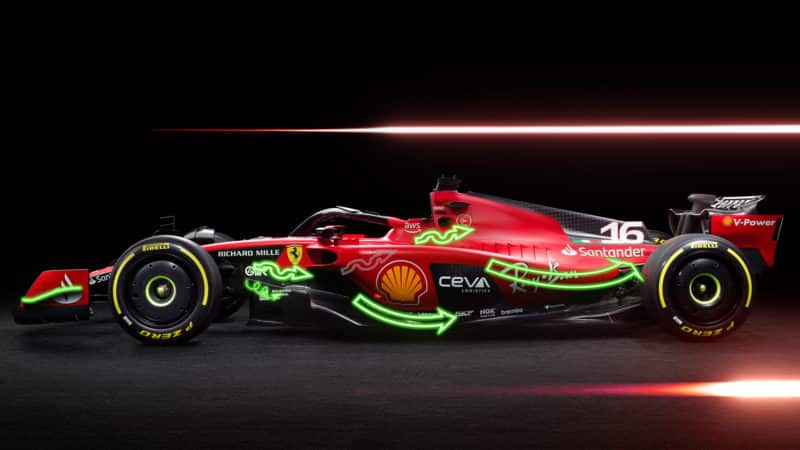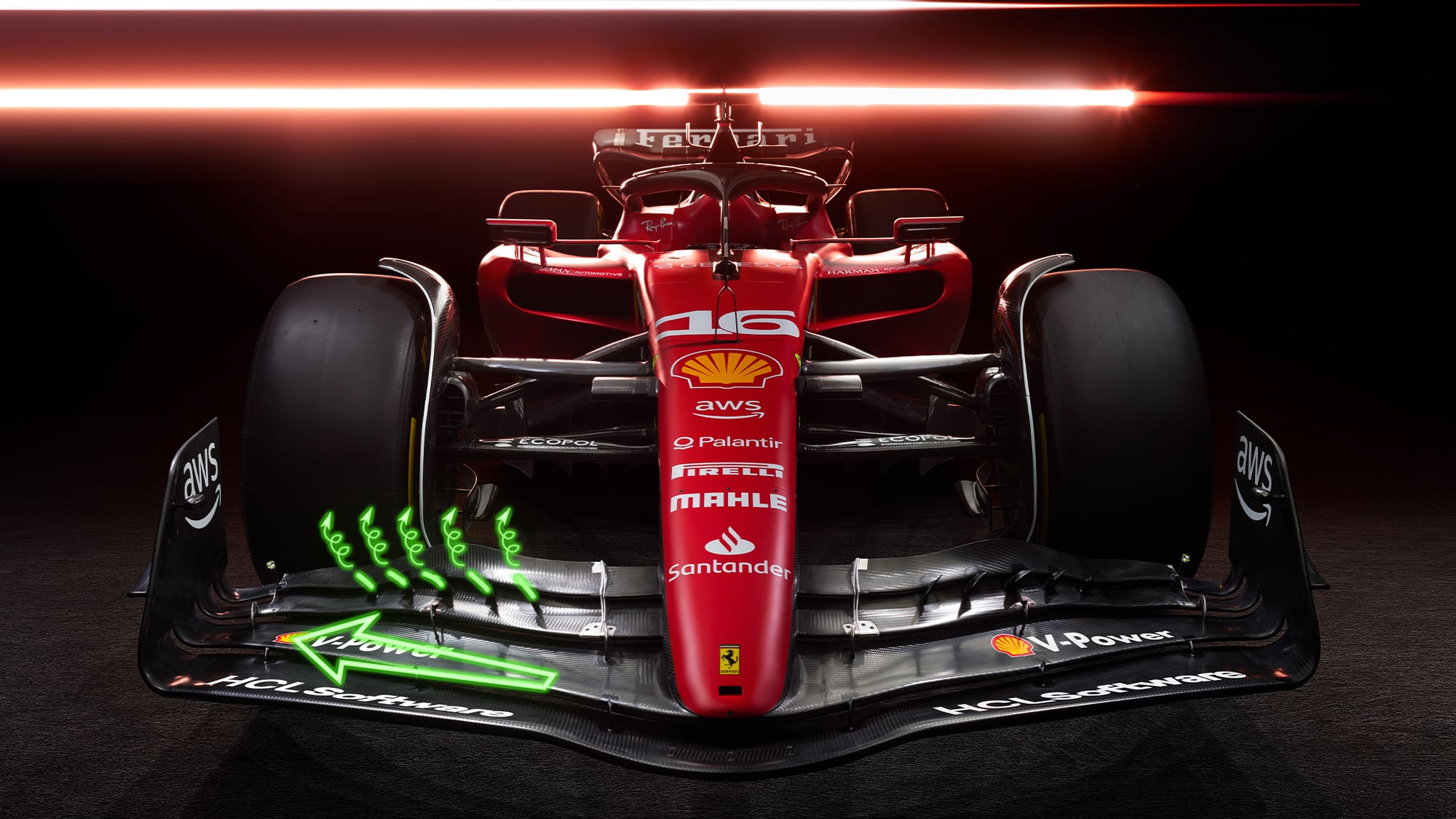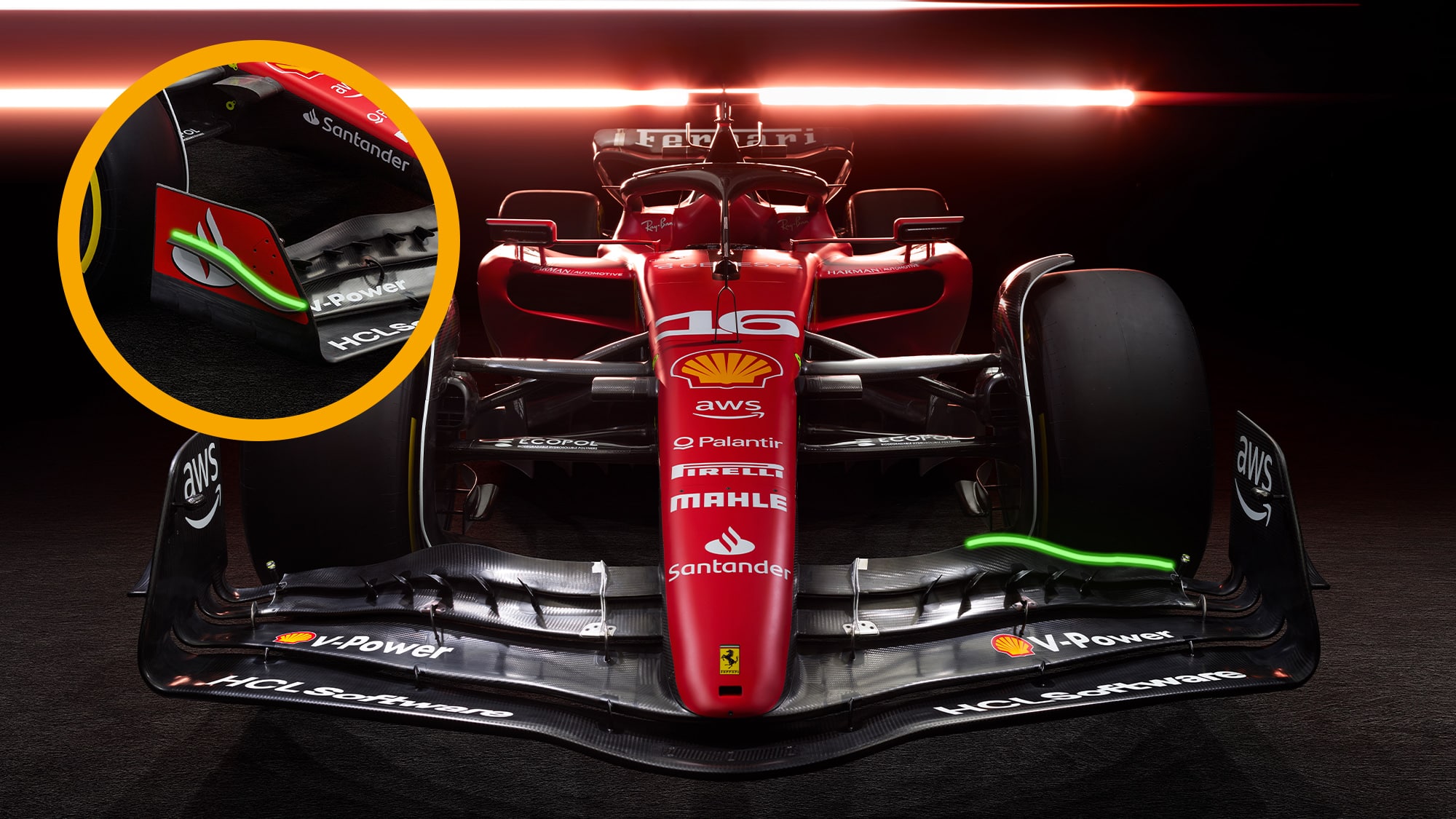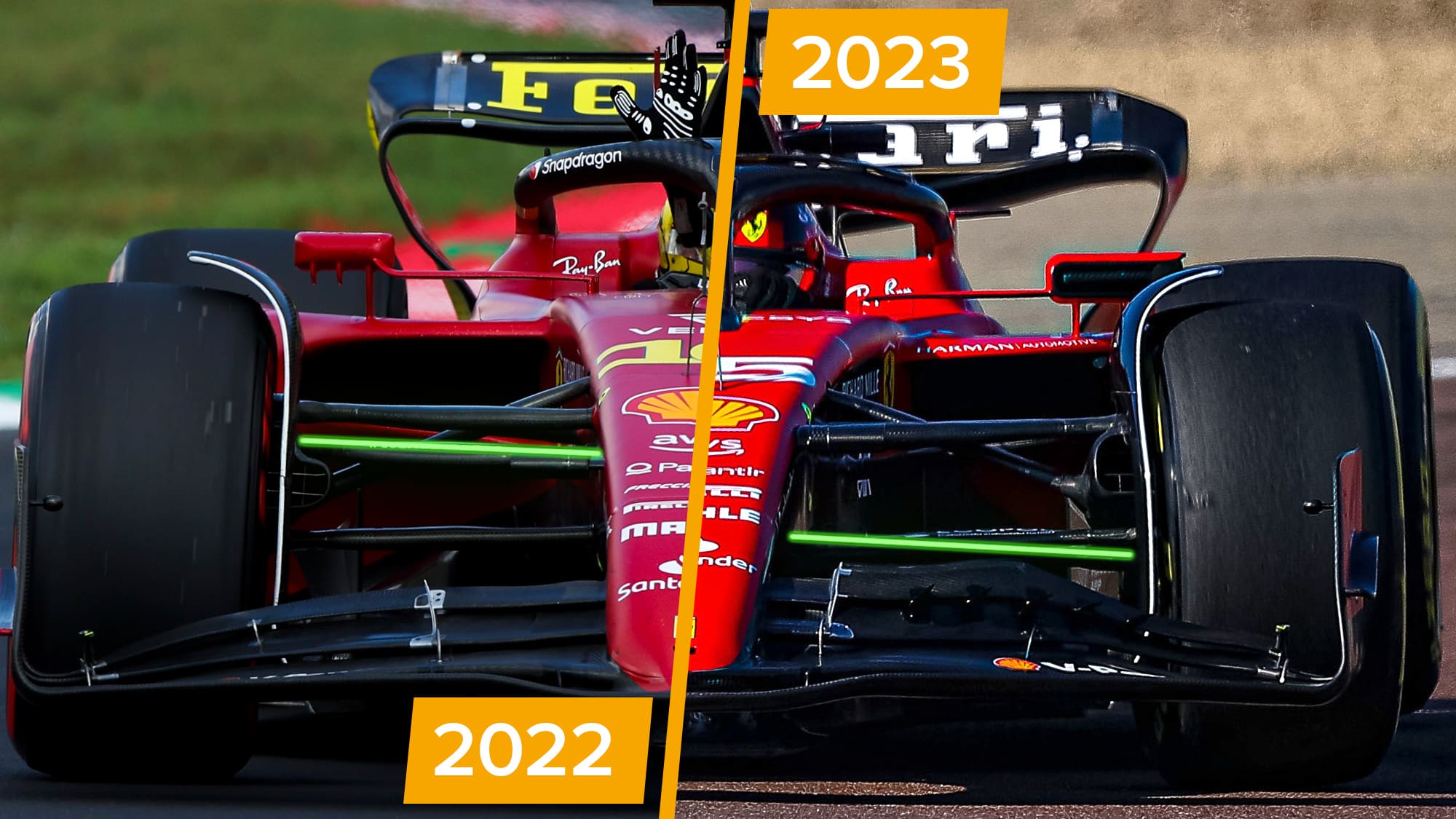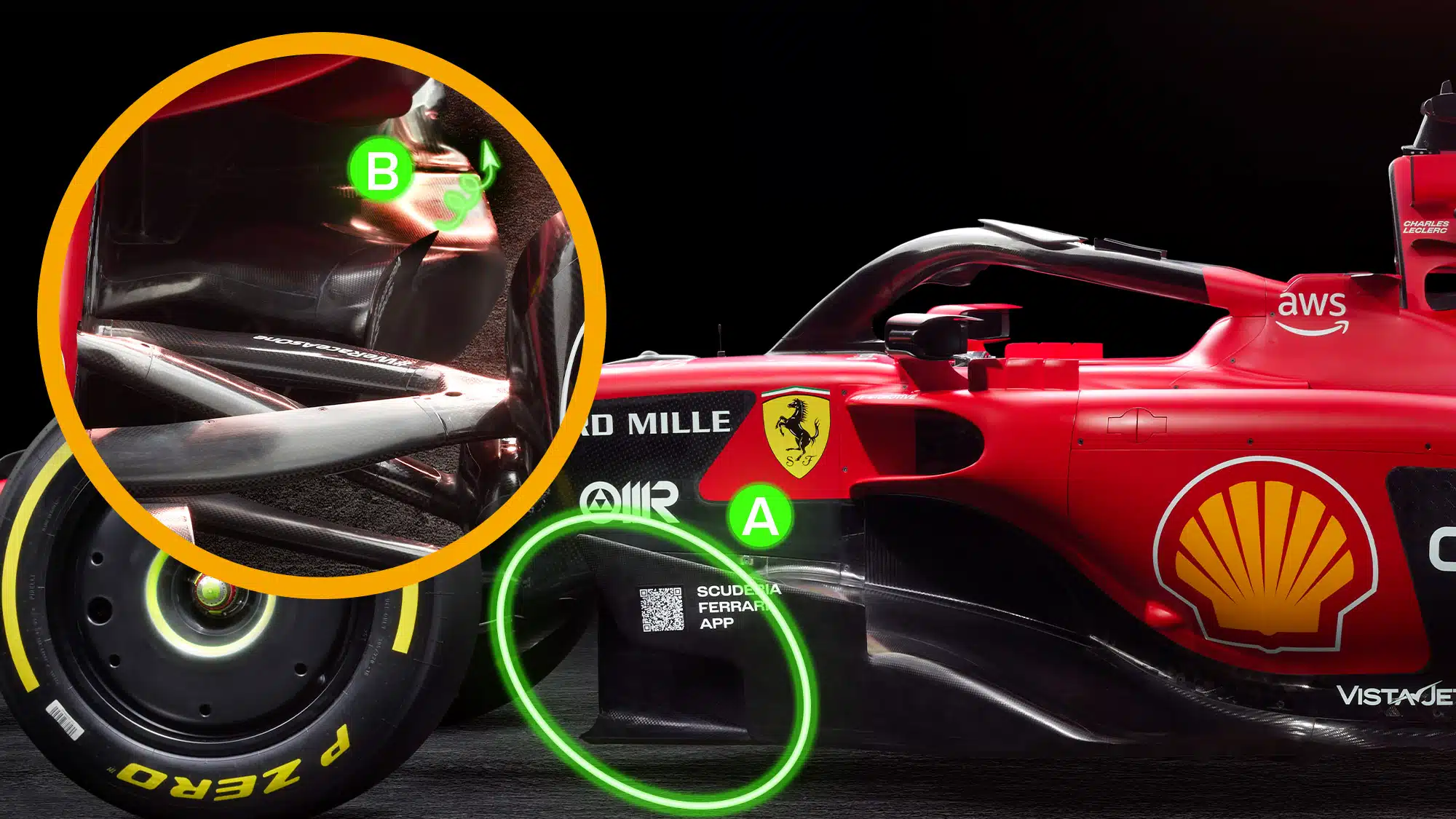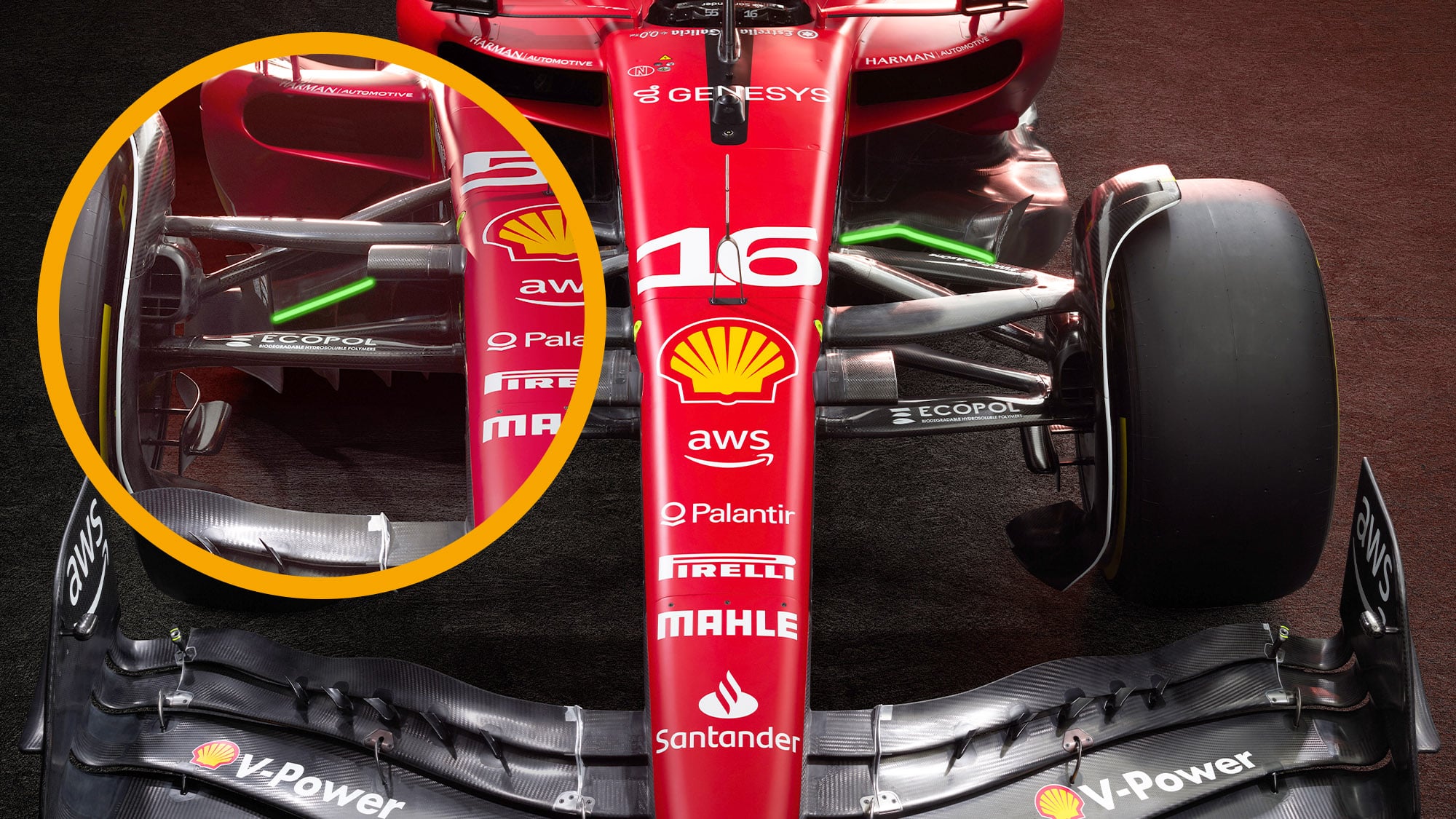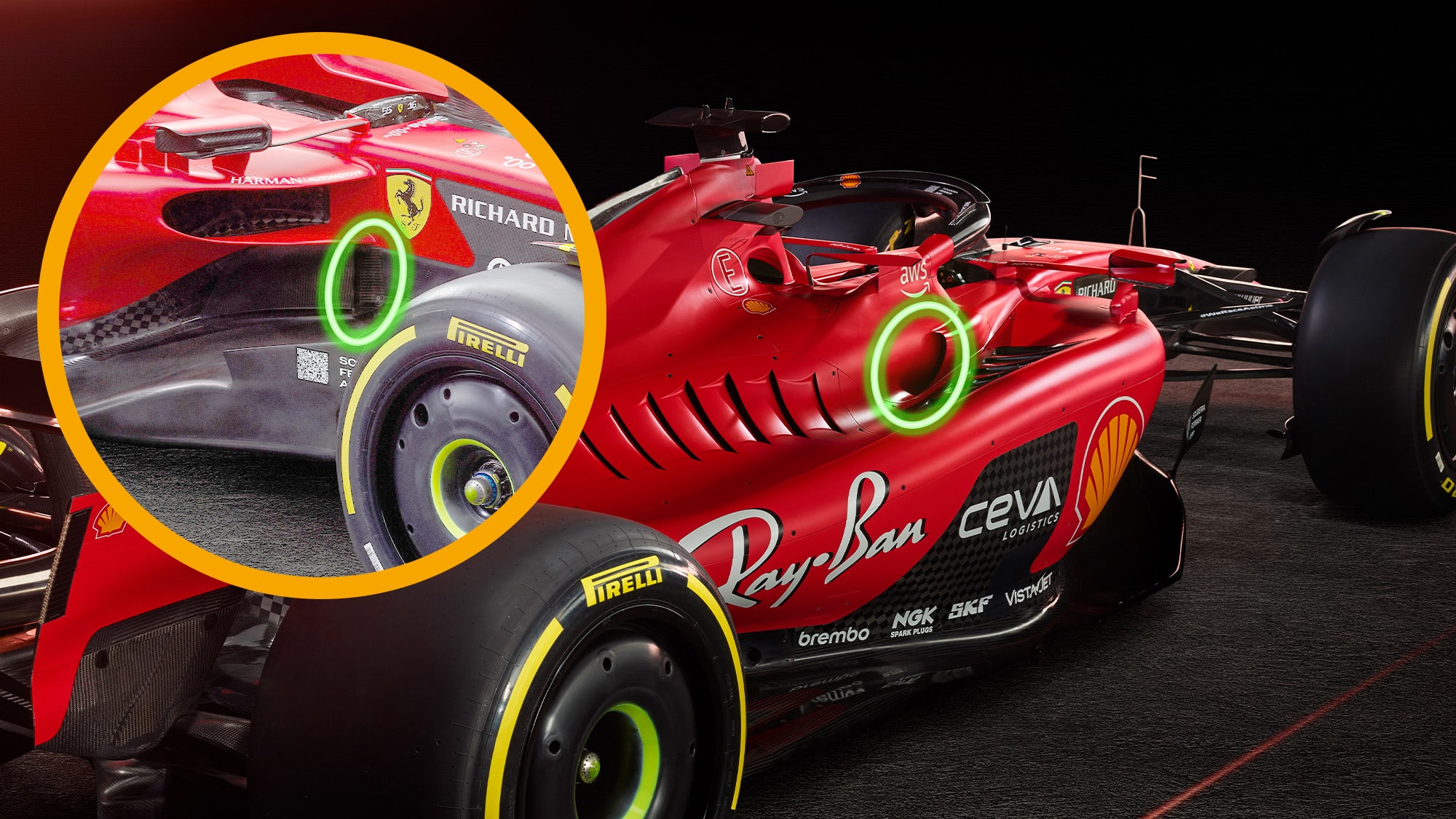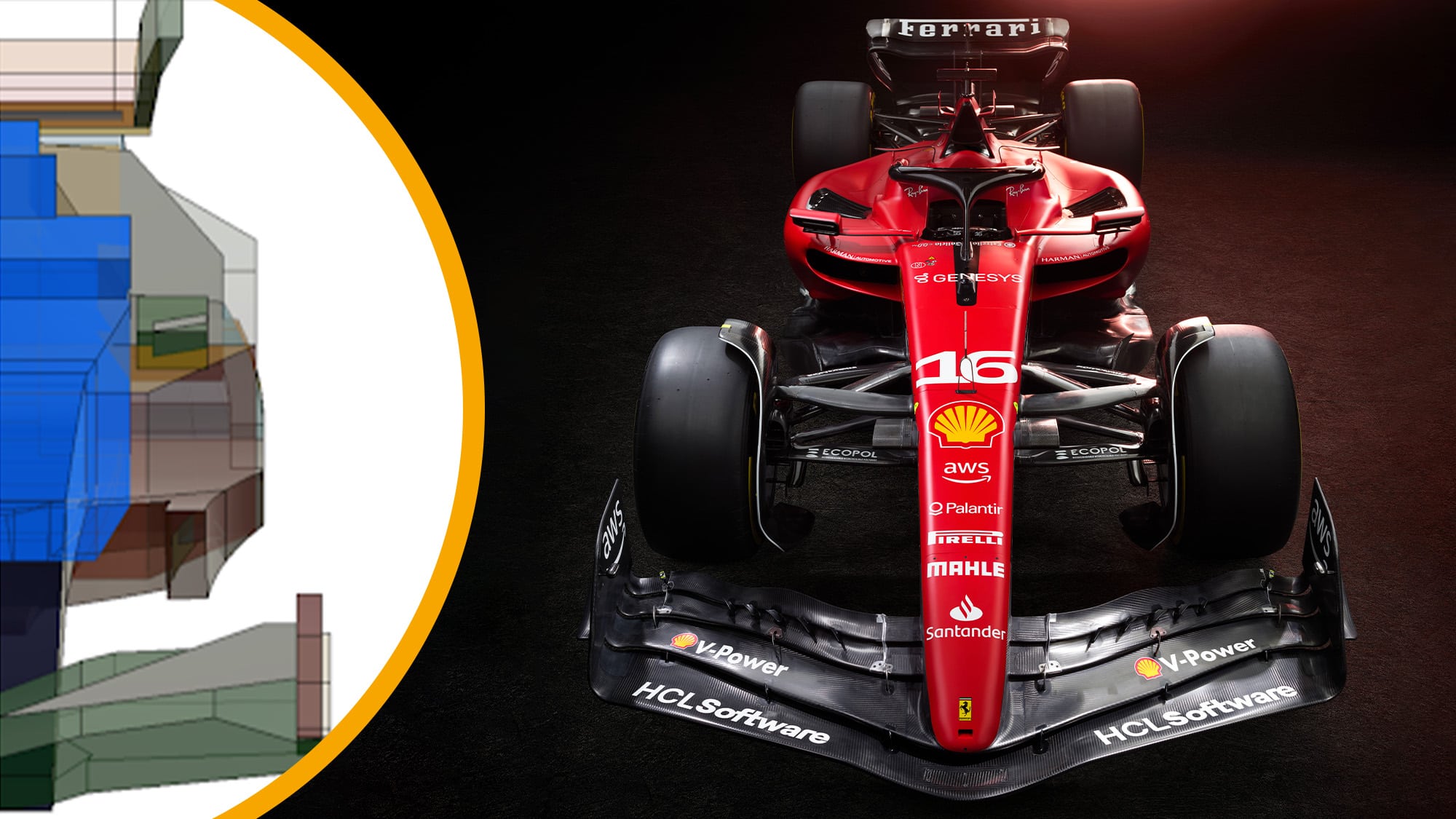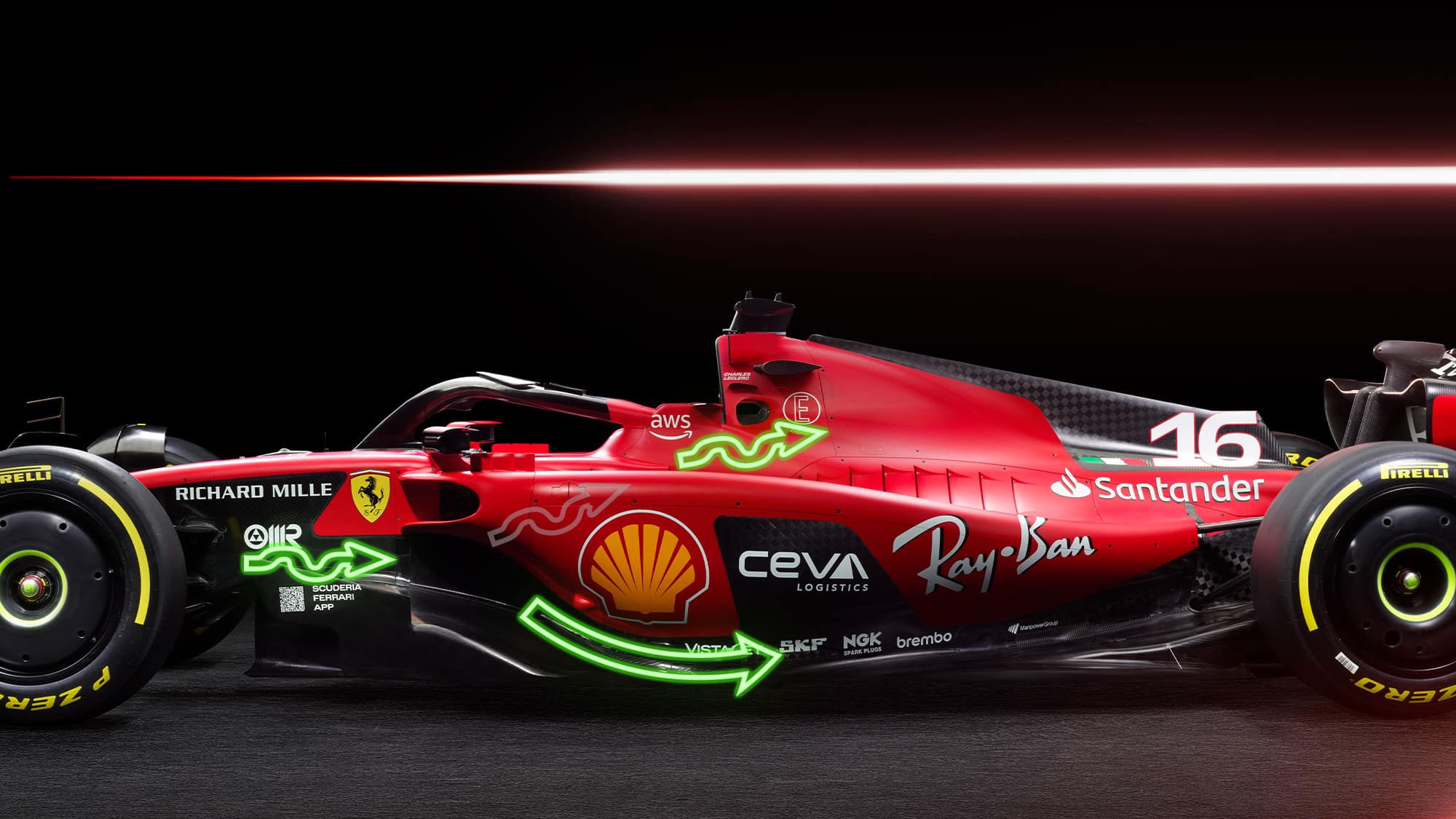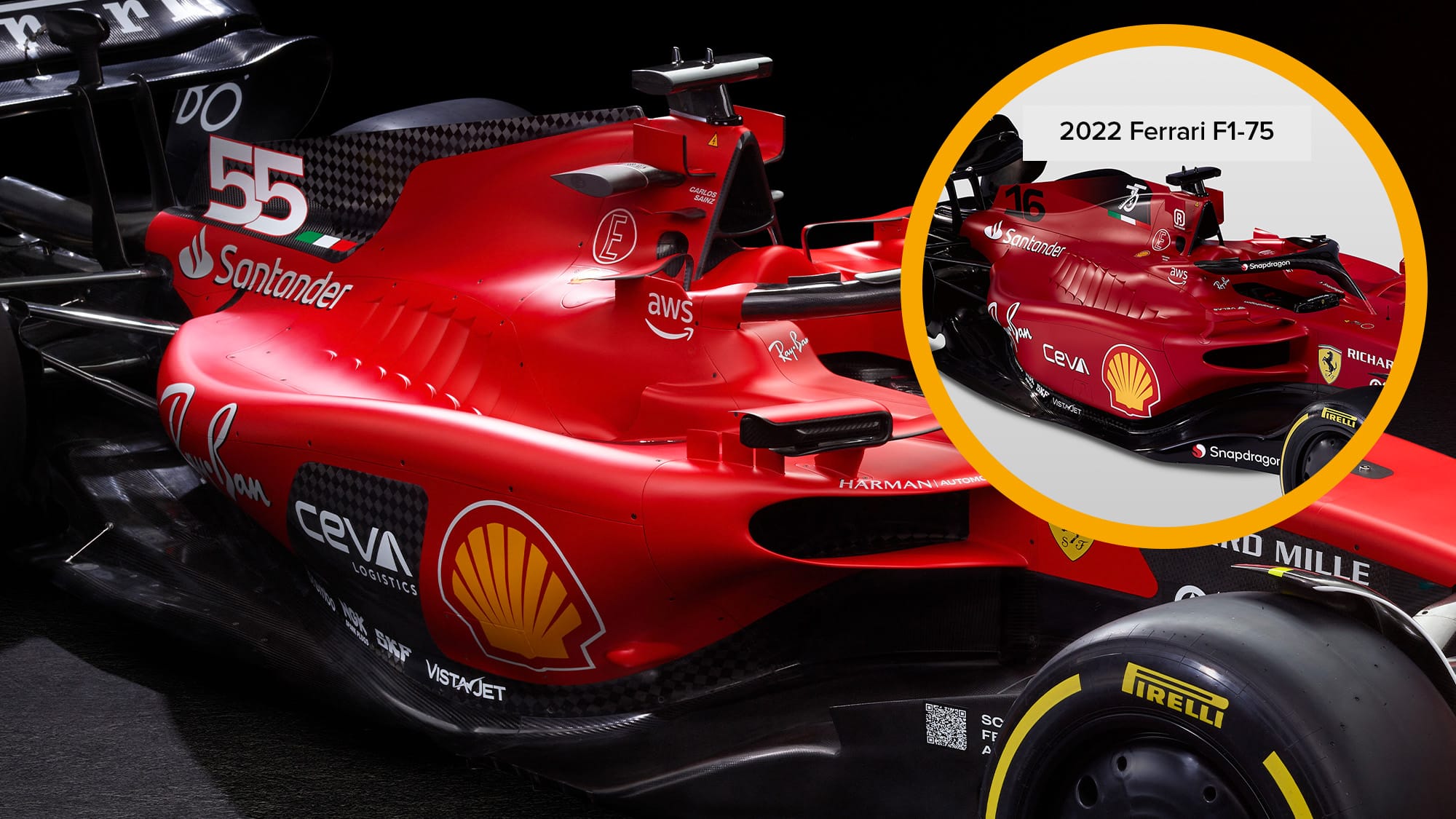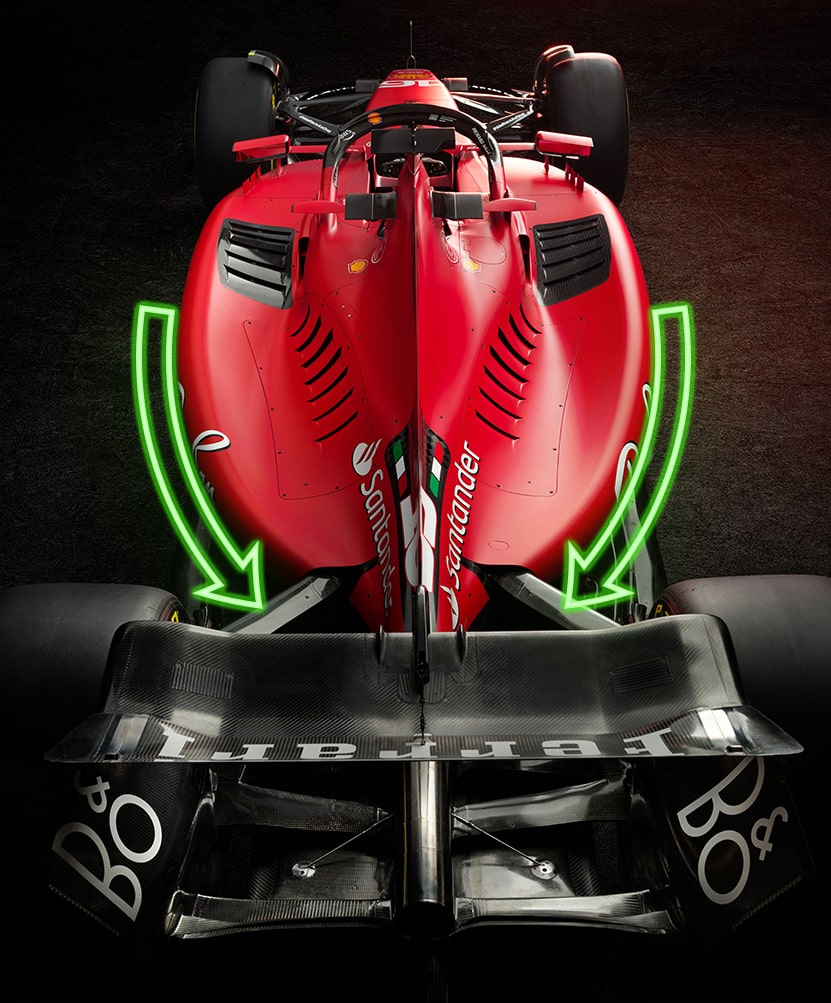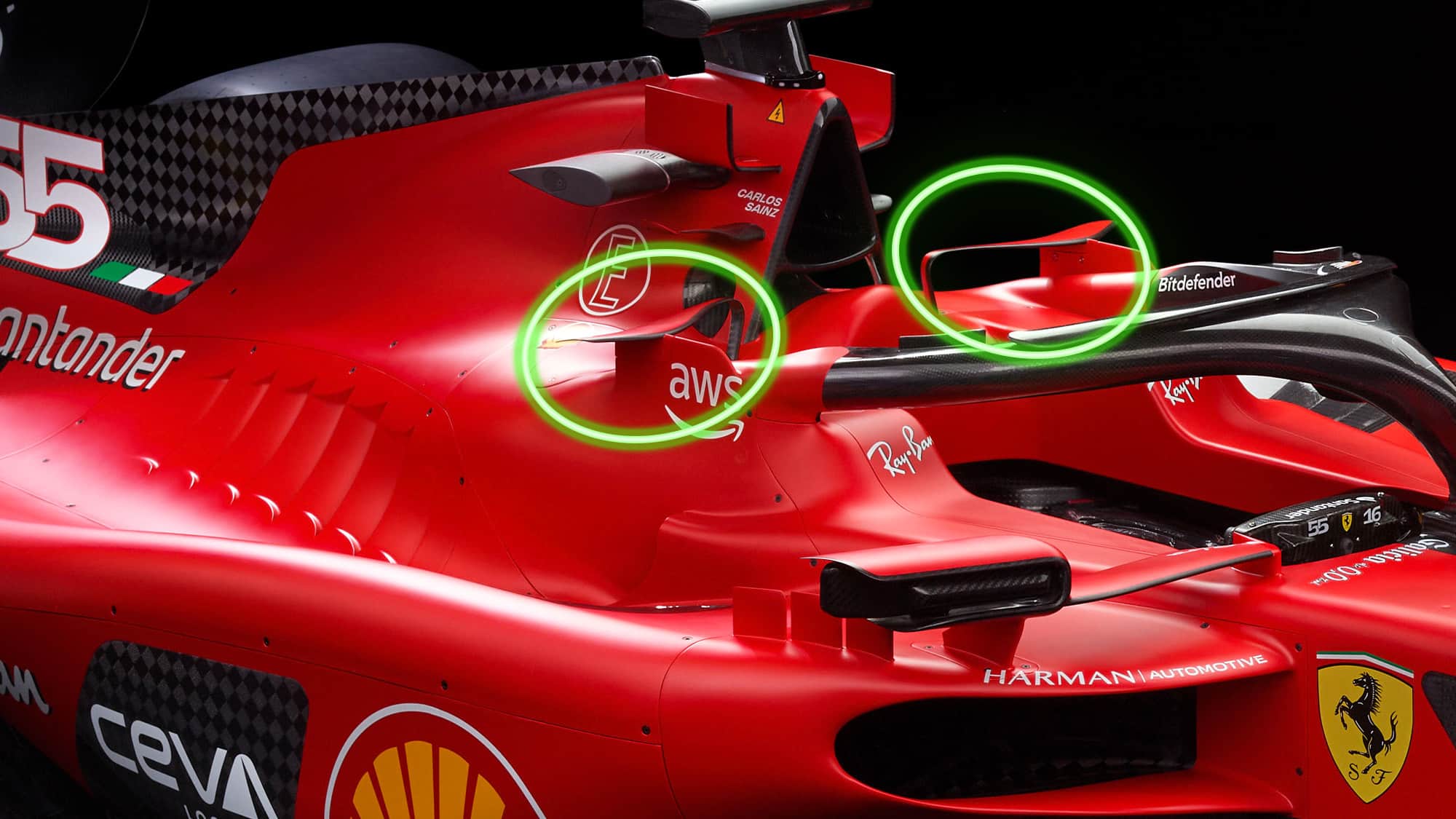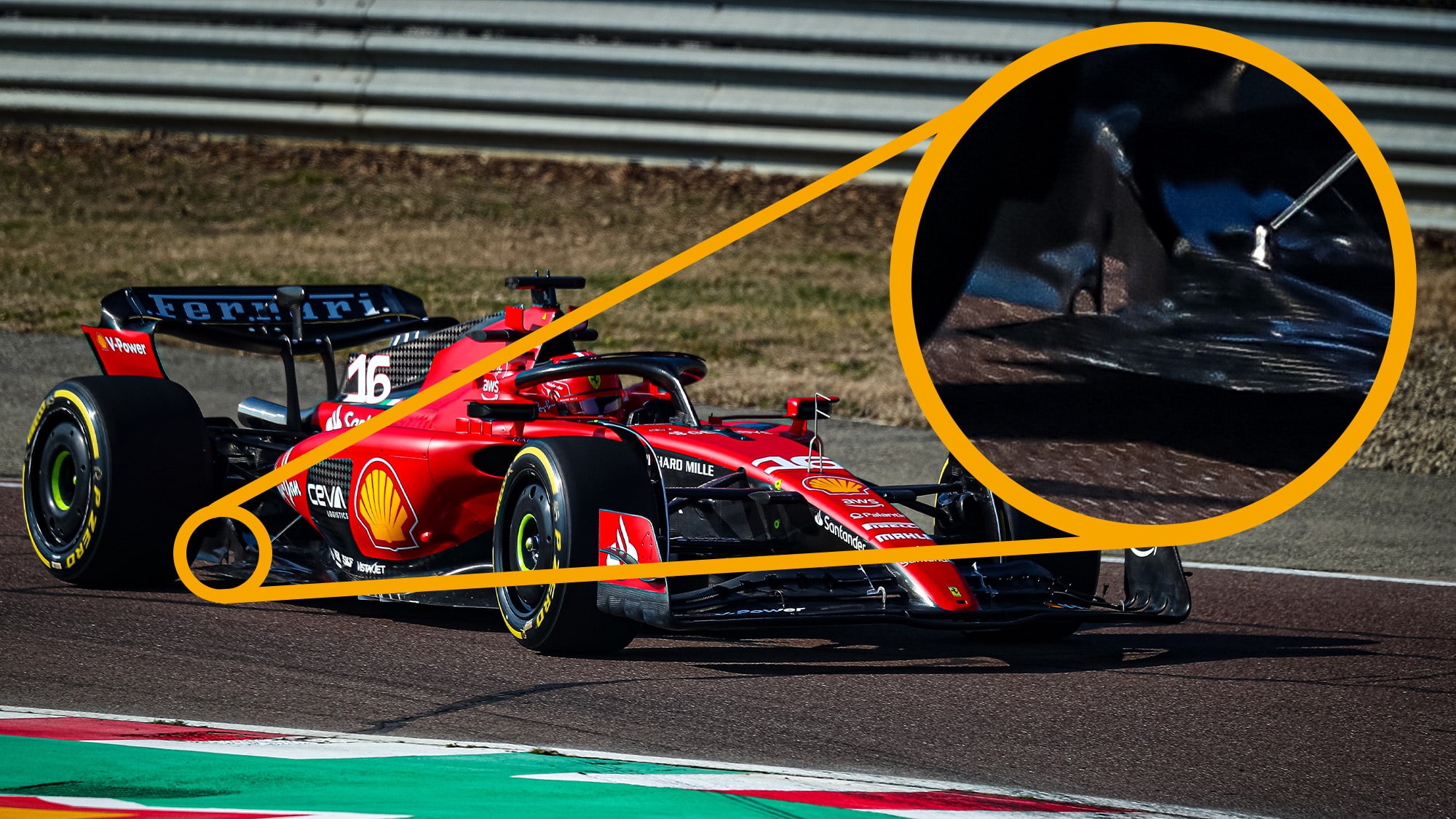In terms of how this is legal, it’s difficult to determine without being able to fully overlay the legality volumes on top of the geometry, but my suspicion is that this is in the bodywork that is declared as ‘mid chassis’.
This bodywork actually has surprisingly loose regulations on it, and as a result designers can use elements such as tight radii that the sidepod bodywork cannot. For example, if this inlet was in the sidepod legality volume, then you would have to have a very large radius on it – it couldn’t be anywhere near as sharp as it is.
But where does this inlet go? Well, if you look on the top surface there’s a distinct new vent on the side of the cockpit, and this is likely where this comes out.
Again, if you look at how tight the radii are on the surface here, it wouldn’t be legal in the bodywork region, so it must be in the mid-chassis legality box (in blue on the left). This box overlaps the aperture box at its rear, which gives the ability to have openings in the surface. You can see when you look from the side that there’s no visible inlet from the lower intake into the main cooling, so it’s a somewhat reasonable assumption that the lower inlet feeds to the upper outlet.
So, what is it doing? Well a condition of the aperture rules is that they must be used for cooling, so we couldn’t just have a bypass duct – it must do some cooling. However, there’s no stipulation on how much cooling it has to do – so it could be doing very little cooling over a coarse finned radiator or other electronics components and mainly be blowing through air.
What would be the benefit of this? Well one likely option is that it is there to bleed off any chassis side losses and prevent them from staying low further downstream. You could pump this disturbed air up the top, which is where designers have already put out most of their cooling losses so they obviously think having loss up here isn’t the end of the world. This is a pretty neat way of implementing an S duct style solution, just for chassis losses instead of nose losses.
Another less likely option is that it is taking clean air from down low to blow the top surface. I think this is fairly unlikely, as you will lose energy through the duct, and there’s likely more benefit to having clean air down low than up high. I also just don’t think the air at the inlet would be that clean, based on my experience with single seaters.
The sidepod itself is similar in design to last year, although you can see it is less bluff. The most obvious telltale of this is the side impact structure protrusion just ahead of the Shell logo, showing where Ferrari has removed the volume form the sidepod.
While that bulge isn’t great for clean airflow, the overall smoothing of the sidepod here is consistent with the direction we have seen from other teams – smoothing the flow path here can reduce losses and improve flow quality further downstream. This smoothing is continued further rearwards — pulling the pod in much earlier than last year and having less of a big slab side (although it’s still definitely a big pod!).
Up top the bodywork maintains the philosophy of last year’s Ferrari, and does not follow the trend of the other cars we have seen of incorporating a downwashing top deck. Instead, the team has kept its cooling losses high, rearranging its louvre layout slightly but still keeping the general intent of keep the cooling losses high, then draw clean air from the sides, not the top, to feed the diffuser rear.
I think an argument can be made for either approach, and it would be hugely dependent on front wheel wake profiles and trajectories as to what the ideal approach would be. It’s worth noting that the Ferrari rear end, like the Haas, is extremely tight at the back. There’s a cooling outlet where the aperture is for the suspension openings, but apart from that it tapers to essentially nothing.
Assuming it has been able to keep its front wakes out far enough, and the curvature on the rear isn’t too extreme, this should make for a very clean flow to the lower diffuser components and beam wing at the rear.
Looking higher up, the halo has some very interesting winglets at the back of it. Given the location and the apparent downwashing nature of them, my guess is their primary purpose is to suppress and control cockpit losses – although it is worth noting they extend quite wide (to the full width of the shoulder outlets in fact, which we theorise to be legality).
This extension looks like it has a vortex shedding tip, so perhaps Ferrari is trying to drive further downwash onto its sidepod further downstream with this structure, or maybe it just wanted to maximise the local downwash so it took it to the full span of legality.
There is one detail at the rear that isn’t covered in the studio photos. Ferrari has put a very interesting treatment on the diffuser sidewall edge – it has essentially notched it twice and used this to break up the edge and create a twisted vane here.
This is a very clever approach here – the flows here are massively inwashing and hard to deal with using just a single straight edge. Teams have previously dealt with this by having very large cutouts here, and Ferrari does maintain its initial cutout. However, by having this area scalloped to create two vanes, it will increase the car’s ability to accept the extreme angle of the incoming flows, and this will clean up the vortex produced along this edge by both discretising it and locally backing off the edge.
If the team was able to fix losses and blowups in certain conditions with this feature, it could be extremely powerful.
